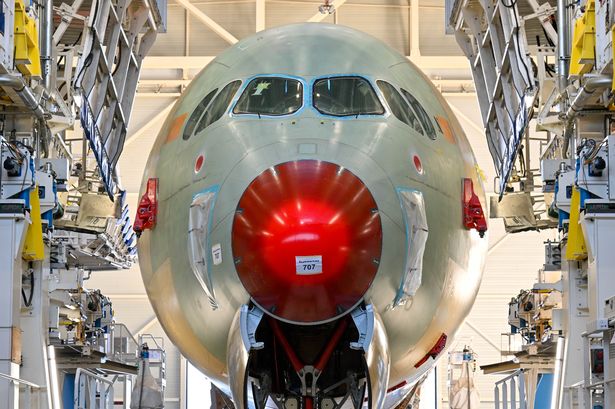By 2027 passengers will be able to fly non-stop to Australia from the UK
Australia’s national carrier Qantas has revealed the first images of its ultra-long-range Airbus — the aircraft that will make aviation history by flying non-stop for 22 hours. The groundbreaking jet will connect Sydney directly to London and New York by 2027, setting a new global record for the longest commercial flight ever operated.
Currently being assembled in Toulouse, France, the aircraft’s major components — including the fuselage, wings and landing gear — have already been joined. Qantas showcased the milestone at its annual general meeting in Brisbane, describing the next-generation aircraft as a “game-changer” for international travel.
The A350-1000ULR will serve as the backbone of Qantas’s ambitious Project Sunrise initiative, designed to link Australia’s east coast with the world’s major cities without stopovers. Each flight will last up to 22 hours — saving travellers as much as four hours compared to current one-stop journeys.
The jet will soon move into a dedicated hangar for the installation of its engines and flight instruments, before beginning a rigorous testing programme in 2026. Qantas CEO Vanessa Hudson hailed the milestone as a defining moment for the airline’s global ambitions.
“Given Australia’s position in the world, Qantas has a long history of breaking aviation barriers. Project Sunrise will not only overcome the tyranny of distance, it will fundamentally change the way our customers travel the world,” she said.
“These flights will cut up to four hours off the journey and transform how people experience ultra long-haul travel, through science-backed design to minimise jetlag and maximise wellbeing.”
The aircraft’s record-breaking range is made possible by an extra 20,000-litre rear fuel tank and state-of-the-art onboard systems, ensuring maximum endurance, comfort and safety. When Project Sunrise launches in 2027, it will make possible what once seemed unthinkable — non-stop flights halfway around the world.
To address the physical challenges of such long-haul travel, Qantas has partnered with Australian designer David Caon and researchers from the University of Sydney’s Charles Perkins Centre. Their team, which includes sleep scientists, developed tailored lighting patterns and meal timing strategies to help reduce jet lag.
Unlike the standard A350-1000 aircraft, which seat more than 300 passengers, Qantas’s version will carry just 238, providing travellers with more personal space and introducing a new “Wellbeing Zone” between Premium Economy and Economy. The area will feature stretch handles, guided exercise screens, a hydration station and light refreshments to keep passengers feeling fresh throughout the flight.
Project Sunrise takes its name from Qantas’s legendary “Double Sunrise” flights during World War II, which stayed airborne long enough to witness two sunrises in a single journey. With the new generation of aircraft, Qantas is rekindling that pioneering spirit — once again pushing the limits of air travel.
The airline also announced the launch of a new domestic travel class, Economy Plus, which will include extra legroom, priority boarding and dedicated overhead locker space. The upgrade will be available for purchase from February, with complimentary access for top-tier frequent flyers.
The first of 12 A350-1000ULR aircraft is expected to be delivered in late 2026, paving the way for commercial operations in early 2027. Qantas said its teams are “incredibly excited” about the project, calling it a “landmark moment for international aviation.”
